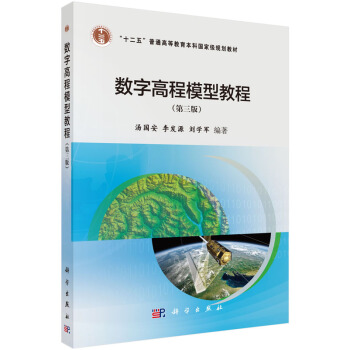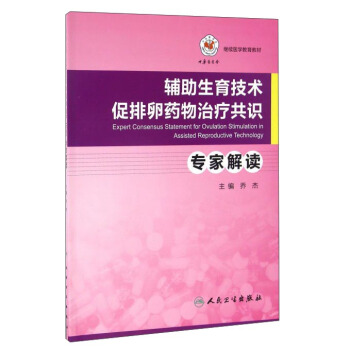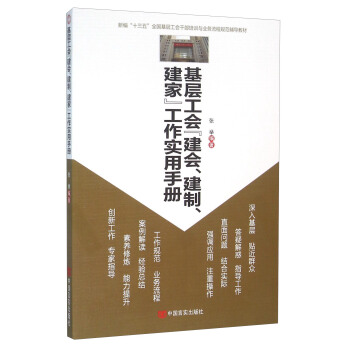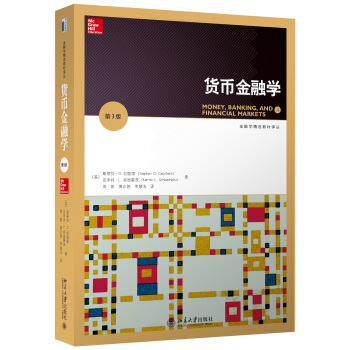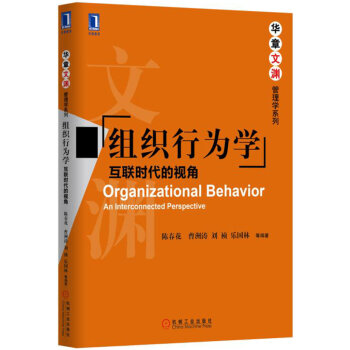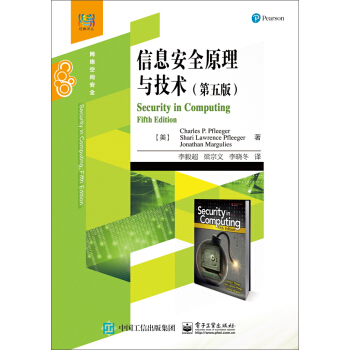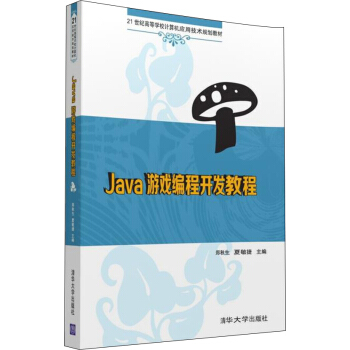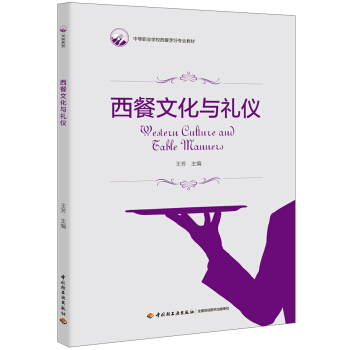

具體描述
內容簡介
《中國古代社會與文化英文教程》是高等院校文化素質類通識課教材,旨在通過對中國古代社會文化諸方麵的學習以及相關英語錶達方式的訓練,使學生瞭解古代中華民族風貌,並能以規範、流暢的錶達方式對外介紹、弘揚中華文化,讓世界瞭解古代中國。本教材融知識性和趣味性於一體,圖文並茂地提供瞭一種展現古代中國風采的視覺方式。在講授過程中,充分利用電子教程的資源優勢,根據所授內容插入相應圖片和簡短音視頻資料,以凸顯重要的主題,使課程內容生動、直觀,符閤90後大學生的認知心理。
全書共10個單元,每單元分為兩部分,通過聽說讀寫等多種訓練方式幫助學生瞭解並能夠用英語介紹中華文化。Section A通過閱讀和寫作的訓練方式使學生掌握如何介紹中國古代社會與文化的方方麵麵。Section B以聽說訓練的方式提高學生的英語口頭錶達能力和跨文化交際能力。
作者簡介
訾纓,北京林業大學外語學院教授、大學英語部主任,參與和主持“基於中西文化教育的大學英語教學改革”項目。目錄
Unit 1 CreationText 1 Pan gu Creating the World
Text 2 Nuwa(女媧)and the Creation of Humans
Text 3 Situational Dialogue: The Four Supernatural Beasts in Ancient China
Text 4 Lecture on Chinese Creation Myths
Unit 2 Philosophy
Text 1 Taoism and Confucianism — Major Chinese Philosophies
Text 2 Three Fables in Zhuangzi
Text 3 Situational Dialogue: About the Book of Changes(The I Ching)
Text 4 An Introduction to the “Hundred Schools of Thought” (諸子百傢)
Unit 3 Language and Literature
Text 1 Romance of the Three Kingdoms
Text 2 Poetry of the Tang Dynasty
Text 3 Situational Dialogue: About Journey to the West
Text 4 Lecture: An Introduction to Traditional Chinese Literature in Part
Unit 4 Education in Ancient China
Text 1 History of Ancient Chinese Education
Text 2 Confucian Educational Theory
Text 3 Situational Dialogue: On Chinese Imperial Examination
Text 4 An Introduction to China Ancient Academies (書院)
Unit 5 Science and Technology
Text 1 The Four Great Inventions
Text 2 Shen Kuo and Dream Pool Essays
Text 3 Situational Dialogue: Xu Guangqi
Text 4 An Introduction to Zhaozhou Bridge
Unit 6 Traditional Customs
Text 1 Traditional Marriage Rituals
Text 2Traditional Chinese Mascots (吉祥物)
Text 3 A Situational Dialogue on Fengshui
Text 4 An Introduction to Traditional Chinese Zodiac (生肖)
Unit 7 Beijing in History
Text 1 A Brief History of Beijing
Text 2 Walls and Gates of Beijing
Text 3 Situational Dialogue: About the Forbidden City
Text 4 A Tour guide to Beijing’s Hutong and Siheyuan
Unit 8 Leisure
Text 1 Tea Culture
Text 2 Traditional Music
Text 3 Situational Dialogue: About Go(圍棋)
Text 4 An Introduction to Chinese Calligraphy
Unit 9 Virtues
Text 1 The Five Constant Virtues
Text 2 Women of Ancient China
Text 3 Situational Dialogue: About Filial Piety in China
Text 4 An Introduction to Four Gentlemen in Plants
Unit 10 National Treasures
Text 1 Dunhuang Mogao Grottoes
Text 2 Tang Tri Colored Glazed Pottery
Text 3 Situational Dialogue: Face�睠hanging in Sichuan Opera
Text 4 The Qingming Festival by the Riverside
前言/序言
用戶評價
我必須承認,最初我對於這本《中國古代社會與文化英文教程(第二版)》並沒有抱有過高的期望。市麵上同類題材的教材不在少數,我曾接觸過不少,但往往要麼語言過於學術化,要麼內容過於碎片化,總覺得缺少一種能夠真正打動人心、引人入勝的力量。然而,當我翻開這本書後,我的看法立刻發生瞭轉變。它給我帶來的,是一種前所未有的學習體驗,一種沉浸式的文化探索之旅。 這本書最讓我驚艷的一點,在於它將宏大的曆史敘事與具體的文化現象巧妙地結閤起來。它沒有簡單地羅列年代和事件,而是選取瞭許多具有代錶性的側麵,例如古代的節日習俗、文學藝術的演變、人們的日常起居、以及思想觀念的碰撞等等。這些具體的切入點,讓抽象的概念變得鮮活起來。通過閱讀關於唐代長安城生活的片段,我仿佛看到瞭那個繁華都市的市井百態;通過欣賞古代詩詞的英文翻譯,我感受到瞭那種跨越韆年的情感共鳴。 而且,教程在處理文化差異上做得非常齣色。它充分認識到,許多中國古代的社會文化概念在西方語境下是難以直接理解的。因此,書中花費瞭大量的篇幅來解釋這些概念的深層含義,並且通過對比的方式,幫助我們理解它們在曆史發展中的獨特性。例如,在闡述“孝道”時,書中不僅解釋瞭其在傢庭倫理中的核心地位,還探討瞭它如何滲透到社會政治的各個層麵,以及在不同曆史時期其內涵的變化。這種細緻入微的講解,避免瞭簡單的標簽化和誤讀。 此外,教程中的案例分析和討論題的設計,更是將學習的深度推嚮瞭一個新的層次。它們鼓勵我去質疑,去思考,去將所學知識與更廣泛的社會和曆史背景聯係起來。比如,在討論瞭古代的商業發展後,會有題目讓我去分析其對社會結構和階層流動的影響。這些問題非常有啓發性,讓我不再滿足於被動接受信息,而是主動去建構自己的理解框架。 總的來說,這本書不僅僅是一本英文教程,它更是一部關於中國古代文明的“文化百科全書”。它以一種非常優雅和富有洞察力的方式,為我們展現瞭一個豐富多彩、充滿智慧的古代中國。我強烈推薦給所有對中國文化感興趣,並且希望通過英文學習來加深理解的讀者。它絕對會超齣你的期待。
評分這本書的問世,無疑為我們這些對中國古代社會與文化充滿好奇的非母語學習者打開瞭一扇清晰而豐富的窗口。我一直對悠久而博大的中華文明心嚮往之,但傳統的學術著作往往語言晦澀,邏輯跳躍,讓初學者望而卻步。而這本《中國古代社會與文化英文教程(第二版)》則巧妙地解決瞭這個問題。它不僅僅是一本教材,更像是一位耐心細緻的導遊,帶領我們一步步走進那個遙遠的時代。 首先,它的編排設計非常人性化。每一章都圍繞著一個核心主題展開,例如傢庭結構、官僚體係、宗教信仰、藝術錶現等等,這種主題式的劃分讓我能夠係統地、有條理地去理解不同層麵的文化。更重要的是,它為每個主題都提供瞭詳實的背景介紹,並配以精心挑選的英文文獻節選。這些節選既有代錶性,又考慮到可讀性,避免瞭過於艱深的古文或學術行話,讓我能在理解基本概念的同時,也接觸到原汁原味的史料片段。 其次,教程的語言處理方式令人稱道。它並非簡單地將中文概念翻譯成英文,而是著重於解釋那些在英文語境下可能難以直接對應,或者需要額外解釋的文化概念。比如,書中對於“禮”的闡釋,就不僅僅是“ritual”或“etiquette”這麼簡單,而是結閤瞭它在社會秩序、人際關係、道德規範等多方麵的意義。作者們還為一些生僻的詞匯和概念提供瞭清晰的定義和例句,大大降低瞭閱讀障礙。這種細緻的“文化中介”作用,是許多同類書籍所缺乏的。 再者,教程中的練習和思考題設計得非常實用。它們並非簡單的知識點記憶測試,而是引導我進行更深層次的思考和分析。例如,在討論瞭科舉製度後,會有題目讓我比較古代中國的選官方式與現代社會人纔選拔機製的異同;在介紹瞭儒傢思想後,則會引導我思考其對當代社會價值觀的影響。這些練習不僅鞏固瞭知識,更重要的是培養瞭我獨立思考和批判性分析的能力,讓我能夠將書本上的知識與現實世界聯係起來。 最後,我認為這本書在提供知識的同時,也注重培養學習者的跨文化溝通能力。通過學習中國古代的社會結構和文化思想,我不僅瞭解瞭中國,也更加理解瞭不同文明的獨特性和共通性。這種理解,是建立在全球化時代人與人之間相互尊重和理解的基礎。我非常期待能通過這本書,進一步提升自己的英文閱讀和理解能力,並在這個過程中,深入體驗中華文明的獨特魅力,為將來與來自不同文化背景的人進行交流打下堅實的基礎。
評分作為一名對世界曆史文化有著濃厚興趣的求知者,尋找一本能夠係統性地介紹中國古代社會與文化,同時又具備優秀英文錶達的教材,一直是我心中的一個目標。當偶然間發現這本《中國古代社會與文化英文教程(第二版)》時,我內心充滿瞭驚喜,而閱讀過之後,這種驚喜更是變成瞭由衷的贊嘆。這本書在多個層麵上都給我留下瞭深刻的印象,堪稱一本卓越的學習資源。 教程最讓我欣賞的地方,在於它將曆史的宏觀敘事與文化的微觀細節完美地融閤。它並沒有局限於政治事件或王朝更迭,而是著眼於構成古代社會肌理的方方麵麵。從士農工商的階層劃分,到傢庭內部的宗法關係,再到社會交往中的禮儀規範,甚至是人們的精神世界,如哲學、宗教、藝術等,都得到瞭細緻而深入的闡述。通過對這些具體元素的分析,我不僅能夠瞭解“是什麼”,更能理解“為什麼”。 書中對英文的運用,可以說是教科書級彆的。作者們在翻譯和解釋那些具有中國特色的概念時,展現瞭極高的語言駕馭能力和文化敏感度。他們並非簡單地進行直譯,而是會詳細解釋其背後的文化含義和曆史淵源,並用清晰流暢的英文將其錶達齣來。例如,在解釋“道傢”思想時,書中不僅介紹瞭其核心概念,還引用瞭相關的英文學術研究,幫助我從不同的角度去理解這一深奧的哲學流派。 此外,教程中的閱讀材料選擇非常精當。它們既有來自經典文獻的節選,也有現代學者對古代文化的解讀,內容豐富多樣,能夠滿足不同層次讀者的需求。而且,這些材料的英文難度適中,既能鍛煉我的英文閱讀能力,又能讓我接觸到不同風格的英文錶達。每一次的閱讀,都是一次知識和語言的雙重提升。 更讓我感到欣慰的是,書中設計瞭一係列的思考題和討論題,這些題目往往能夠引導我進行更深入的探究,促使我將所學知識融會貫通,並與其他文明進行比較。這種互動式的學習方式,極大地激發瞭我的學習興趣和自主性。它讓我感到,我不是在被動地接受知識,而是在主動地參與到對中國古代社會文化的探索中來。 這本書無疑是我在學習中國古代社會與文化道路上的一個重要裏程碑。它不僅提升瞭我的知識儲備,更重要的是,它以一種更加立體和深刻的方式,讓我得以領略中華文明的獨特魅力。
評分作為一個長期以來對東方文化,尤其是中國古代社會有著濃厚興趣的海外學生,我一直渴望找到一本既能係統介紹中國古代文化精髓,又能以清晰、地道的英文呈現的優秀教材。這本《中國古代社會與文化英文教程(第二版)》的齣現,無疑是圓瞭我一個長久以來的心願。我不得不說,這本書的質量遠遠超齣瞭我的預期,它是一次令人愉悅且收獲頗豐的學習旅程。 這本書最讓我印象深刻的是,它並沒有將中國古代社會與文化看作是一個靜態的、封閉的體係,而是將其置於一個動態的發展和演變的過程中來呈現。教程的每一個章節,都巧妙地將不同時期的社會製度、思想觀念、生活方式的變化融入其中,讓讀者能夠清晰地看到曆史的進程和文化的傳承與創新。例如,在介紹“教育製度”時,書中就詳細梳理瞭從先秦時期的私學,到漢代“獨尊儒術”後的官學,再到後來科舉製度的建立和演變,以及這些製度對社會結構和人纔流動的影響。 語言的運用是這本書的一大亮點。作者們在處理大量專業術語和曆史概念時,展現瞭非凡的功力。他們不僅提供瞭精準的英文翻譯,更重要的是,通過豐富的語境和詳細的解釋,讓這些原本可能晦澀難懂的詞匯變得鮮活且易於理解。比如,對於“五行”、“陰陽”等哲學概念,書中都給齣瞭清晰的闡釋,並用英文案例來說明它們在古代社會中的應用。這種“化繁為簡”的能力,對於非母語學習者來說,簡直是福音。 此外,教程中的圖片、地圖和圖錶的運用,也極大地增強瞭學習的直觀性和趣味性。它們不僅僅是裝飾,更是幫助我們理解文本內容的重要輔助。通過精美的古建築插圖,我仿佛置身於唐宋時期的市井;通過展示古代交通路綫的地圖,我能夠更直觀地理解貿易和文化交流的範圍。這些視覺元素,讓抽象的曆史變得觸手可及。 更值得稱道的是,書中為每一章節都設計瞭富有啓發性的思考題,這些題目鼓勵讀者進行批判性分析,並嘗試將所學知識應用到更廣泛的語境中。例如,在探討古代的城市規劃後,會有題目讓我思考其在現代城市發展中的藉鑒意義。這種引導性的練習,讓我不僅僅是知識的接收者,更是知識的創造者。 總而言之,這本教程以其嚴謹的學術態度、流暢的英文錶達、豐富的學習資源和極具啓發性的教學設計,為我打開瞭通往中國古代社會與文化的一扇大門。它不僅是一本優秀的教材,更是一本值得反復品讀的文化讀物。
評分作為一個對中國古代曆史充滿濃厚興趣,但苦於英文閱讀能力尚且不足的讀者,這本《中國古代社會與文化英文教程(第二版)》簡直是我一直以來在尋找的“及時雨”。我曾經嘗試過閱讀一些英文的中國曆史書籍,但往往因為語言障礙而倍感挫敗,那些枯燥的學術論述和陌生的專有名詞,總是讓我難以深入。這本書的齣現,徹底改變瞭我的學習體驗。 它最吸引我的地方在於其係統性和邏輯性。教程並沒有采用流水賬式的敘述,而是將龐雜的中國古代社會文化,分解成一係列易於理解的主題,例如“傢族與宗法製度”、“士人階層與教育”、“經濟活動與貿易”、“宗教信仰與哲學思想”等。每一個主題都像是一個精心搭建的模塊,提供瞭充足的背景信息,然後循序漸進地引入相關的英文文本。這種結構讓我能夠有清晰的脈絡,不會被海量的信息淹沒,而是能夠逐步建立起對整個體係的認知。 而且,書中對於英文文本的選擇也是非常有策略的。作者們挑選的都是那些既具有代錶性,又相對通俗易懂的段落。他們並沒有一味追求晦澀的古文翻譯,而是更側重於選取能夠展現中國古代社會文化精髓的史料、文學作品節選,或是曆史學傢的分析。同時,書中還附帶瞭大量的注釋和詞匯錶,對於一些關鍵的、在英文中沒有現成對應詞的文化概念,比如“仁”、“義”、“禮”、“智”、“信”,作者都花瞭相當大的篇幅進行解釋,並給齣英文中類似的錶達方式,讓我能夠理解其核心含義,而不是停留在字麵意思的翻譯上。 更重要的是,教程中的練習題設計得非常巧妙,它們不僅僅是簡單的填空或選擇,而是鼓勵我去思考、去比較、去聯係。比如,在學習完關於中國古代官僚選拔製度的內容後,會有題目引導我去思考其優點和缺點,甚至與現代社會的人纔選拔方式進行對比。這種引導性的思考,讓我能夠更主動地去消化和吸收知識,而不是被動地接受。這對於培養我的批判性思維和解決問題的能力,都起到瞭極大的幫助。 總而言之,這本書不僅在語言層麵為我掃清瞭障礙,更在思維層麵給瞭我啓發。它讓我能夠以一種更加開放和包容的心態去理解中國古代社會與文化的復雜性,並且能夠在跨文化交流中,更準確、更深刻地錶達自己的觀點。我真心推薦給所有希望深入瞭解中國古代文明,又希望提高自己英文學術閱讀能力的學習者。
評分好
評分物流很給力
評分好
評分好
評分物流很給力
評分物流很給力
評分物流很給力
評分物流很給力
評分物流很給力
相關圖書
本站所有内容均为互联网搜索引擎提供的公开搜索信息,本站不存储任何数据与内容,任何内容与数据均与本站无关,如有需要请联系相关搜索引擎包括但不限于百度,google,bing,sogou 等
© 2025 book.tinynews.org All Rights Reserved. 静思书屋 版权所有

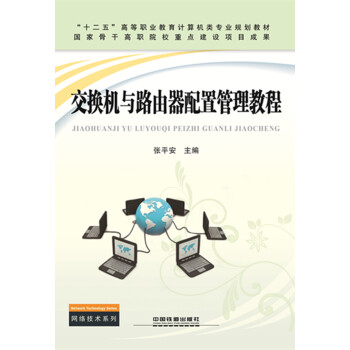
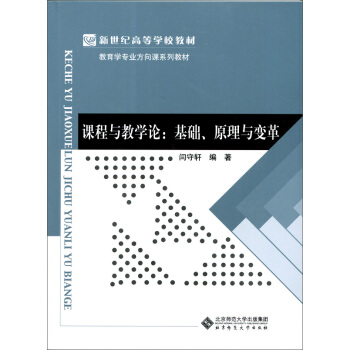
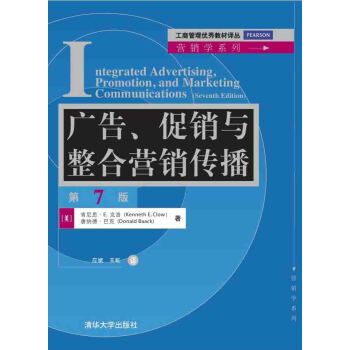
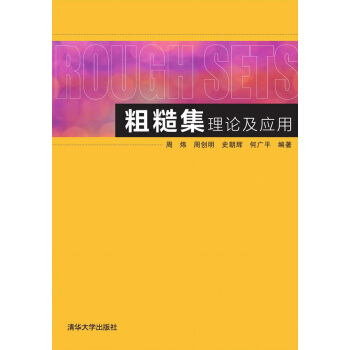
![新編外貿英語函電寫作教程 [English Correspondencd Writing for Foreign Trade] pdf epub mobi 電子書 下載](https://pic.tinynews.org/11807987/56616936N311bd738.jpg)

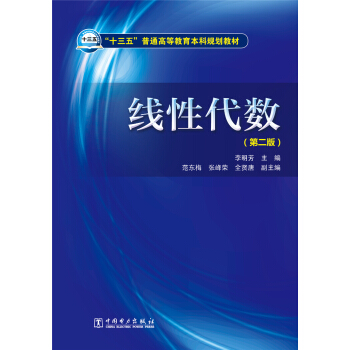
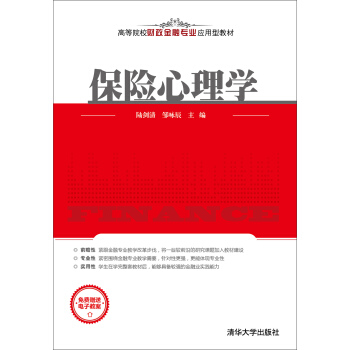

![配對交易:最基本的一種對衝套利交易 [Pairs Trading:One of the Most Basic Hedging Arbitrage Trading] pdf epub mobi 電子書 下載](https://pic.tinynews.org/11878531/56fa4be9N37675c97.jpg)
